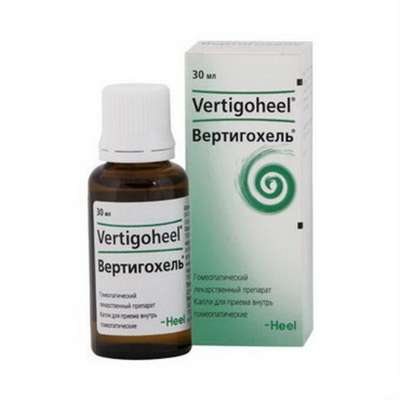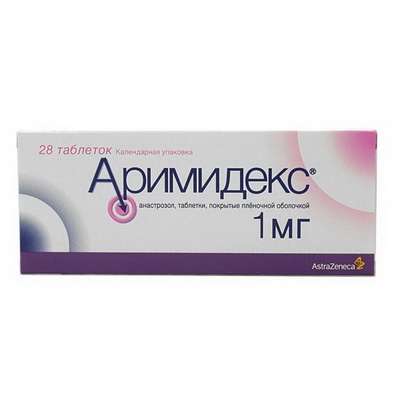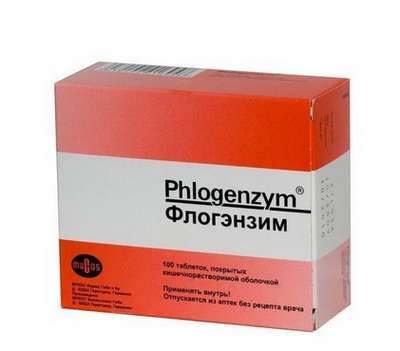Instruction for use: Midazolam
I want this, give me price
Latin name: Midazolamum (genus. Midazolami)
Chemical name
8-Chloro-6- (2-fluorophenyl) -1-methyl-4H-imidazo [1,5-a] [1,4] benzodiazepine (as hydrochloride or maleate)
Gross formula
C18H13ClFN3
Pharmacological groups of substance Midazolam:
Sleeping Pills
Anesthetic means
The nosological classification (ICD-10)
F51.0 Insomnia of inorganic etiology: Situational insomnia; Situational sleep disorders
G47.0 Sleep disturbance and sleep disturbances [insomnia]: Insomnia; Insomnia, especially the difficulty of falling asleep; Desynchronosis; Prolonged sleep disorder; Difficulty falling asleep; Insomnia; Short-term and transient sleep disorders; Short-term and chronic sleep disorders; Short or shallow sleep; Disturbance of falling asleep; Sleep disturbance, especially in the phase of falling asleep; Sleep disturbances; Sleep Disorders; Neurotic sleep disorder; Shallow shallow sleep; Shallow sleep; Unsatisfactory quality of sleep; Night Awakening; The pathology of sleep; Postmodern violation; Transient insomnia; Problems with falling asleep; Early Awakening; Early morning awakening; Early Awakenings; Sleep disorder; Persistent insomnia; Difficult to fall asleep; Difficulty falling asleep in children; Difficulty falling asleep; Persistent insomnia; Deterioration of sleep Chronic insomnia; Frequent nocturnal and / or early morning awakenings; Frequent nocturnal awakenings and a feeling of shallow sleep; Night Awakenings
R45.1 Anxiety and agitation: Agitation; Anxiety; Explosive excitability; Internal stimulation; Excitability; Excitation; Excitation acute; Psychomotor agitation; Hyperexcitability; Motor excitement; Cessation of psychomotor agitation; Nervous excitement; Restlessness; Night trouble; Acute stage of schizophrenia with agitation; Acute mental agitation; Paroxysm of excitation; Overexcitation; Increased excitability; Increased nervous excitability; Increased emotional and cardiac excitability; Increased agitation; Mental arousal; Psychomotor agitation; Psychomotor agitation in psychoses; Psychomotor agitation of an epileptic nature; Psychomotor paroxysm; Psychomotor fit; Symptoms of Excitation; Symptoms of psychomotor agitation; The state of agitation; A state of anxiety; Excitation status; A state of heightened concern; The state of psychomotor agitation; Conditions of anxiety; Excitation conditions; The state of excitement in somatic diseases; Excitation level; Feelings of anxiety; Emotional arousal
Z100.0 * Anesthesiology and premedication: Abdominal surgery; Adenomectomy; Amputation; Angioplasty of the coronary arteries; Carotid artery angioplasty; Antiseptic treatment of skin in wounds; Antiseptic treatment of hands; Appendectomy; Atheroctomy; Balloon coronary angioplasty; Vaginal hysterectomy; Venous bypass; Interventions on the vagina and cervix; Interventions on the bladder; Interference in the oral cavity; Reconstructive-reconstructive operations; Hand hygiene of medical personnel; Gynecological Surgery; Gynecological interventions; Gynecological operations; Hypovolemic shock during surgery; Disinfection of purulent wounds; Disinfection of the edges of wounds; Diagnostic Interventions; Diagnostic procedures; Diathermocoagulation of the cervix; Long-term surgeries; Replacement of fistulous catheters; Infection in orthopedic surgical interventions; Artificial heart valve; Kistectomy; Short-term outpatient surgery; Short-term operations; Short-term surgical procedures; Cryotyreotomy; Blood loss during surgical interventions; Bleeding during surgery and in the postoperative period; Kuldotsentez; Laser coagulation; Laserocoagulation; Laser retinopathy of the retina; Laparoscopy; Laparoscopy in gynecology; Likvornaya fistula; Small gynecological operations; Small surgical interventions; Mastectomy and subsequent plastic surgery; Mediastinotomy; Microsurgical operations on the ear; Mukinging operations; Suturing; Minor surgery; Neurosurgical operation; Eclipse of the eyeball in ophthalmic surgery Orchiectomy; Pancreatectomy; Pericardectomy; The rehabilitation period after surgical operations; Reconvalence after surgical intervention; Percutaneous transluminal coronary angioplasty; Pleural Thoracocentesis; Pneumonia postoperative and post traumatic; Preparing for surgical procedures; Preparing for a surgical operation; Preparation of the surgeon's arms before surgery; Preparation of the colon for surgical interventions; Postoperative aspiration pneumonia in neurosurgical and thoracic operations; Postoperative nausea; Postoperative hemorrhage; Postoperative granuloma; Postoperative shock; Early postoperative period; Myocardial revascularization; Resection of the apex of the tooth root; Resection of the stomach; Bowel resection; Resection of the uterus; Liver resection; Small bowel resection; Resection of a part of the stomach; Reocclusion of the operated vessel; Gluing of tissues during surgical interventions; Suture removal; Condition after eye surgery; Condition after surgery; Condition after surgery in the nasal cavity;Condition after gastrectomy; Condition after resection of the small intestine; Condition after tonsillectomy; Condition after removal of duodenum; Condition after phlebectomy; Vascular Surgery; Splenectomy; Sterilization of surgical instrument; Sterilization of surgical instruments; Sternotomy; Dental surgery; Dental intervention on periodontal tissues; Strumectomy; Tonsillectomy; Thoracic surgery; Total gastrectomy; Transdermal intravascular coronary angioplasty; Transurethral resection; Turbinectomy; Removal of a tooth; Cataract removal; Removing Cysts; Removal of tonsils; Removal of myoma; Removal of mobile milk teeth; Removal of polyps; Removal of a broken tooth; Removal of the uterus; Removal of seams; Urethrotomy; Fistula of the luminal ducts; Frontoetmoidohaimorotomy; Surgical infection; Surgical treatment of chronic ulcers of extremities; Surgery; Surgery in the anus; Surgery on the large intestine; Surgical practice; Surgical procedure; Surgical interventions; Surgical interventions on the digestive tract; Surgical interventions on the urinary tract;Surgical interventions on the urinary system; Surgical interventions on the genitourinary system; Surgical intervention on the heart; Surgical procedures; Surgical operations; Surgical operations on veins; Surgical intervention; Vascular; Cholecystectomy; Partial resection of the stomach; Extraperitoneal hysterectomy; Percutaneous transluminal coronary angioplasty; Percutaneous transluminal angioplasty; Coronary artery bypass grafting; Extirpation of the tooth; Extirpation of infant teeth; Extirpation of pulp; Extracorporeal circulation; Extraction of the tooth; Extraction of teeth; Extraction of cataracts; Electrocoagulation; Endourological interventions; Episiotomy; Ethmoidotomy; Complications after tooth extraction
CAS code
59467-70-8
Characteristics of the substance Midazolam
The hypnotic from the group of benzodiazepine derivatives.
Midazolam - a white or slightly yellowish crystalline substance, insoluble in water. Midazolam hydrochloride is soluble in water.
Pharmacology
Pharmacological action - hypnotic, sedative.
Interacts with specific benzodiazepine receptors located in the postsynaptic GABA-receptor complex, increases the sensitivity of GABA receptors to the mediator (GABA). This increases the frequency of opening ion channels for incoming currents of chloride ions, hyperpolarization of the membrane occurs and neuronal activity is inhibited. Prevents re-uptake of GABA, contributing to its accumulation in the synaptic cleft. There is evidence that excessive accumulation of GABA in neuronal synapses causes induction of general anesthesia.
When ingested quickly and completely absorbed from the digestive tract, has the effect of "first passage" through the liver (30-60% of midazolam is metabolized). Cmax in the blood is reached within 1 hour (eating increases the time to reach Cmax). With the / m introduction, the absorption is fast and complete, Cmax is achieved within 30 -45 minutes, bioavailability is more than 90%. In blood, 95-98% binds to proteins, mainly albumin. Quickly distributed in the body. The volume of distribution is 1-3,1 l / kg. Passes through the histogematic barriers, incl. GEB, placental, penetrates into breast milk in small amounts. In the cerebrospinal fluid penetrates slowly and in small amounts. It is subjected to biotransformation in the liver by hydroxylation with the participation of the cytochrome P450 3A4 isoenzyme. The main metabolites, 1-hydroxymidazolam, also called alpha-hydroxyimidazoles (about 60%), and 4-hydroxy-midazolam (5% or less) have pharmacological activity, but lower than the parent compound. Excreted by the kidneys in the form of glucuronic conjugates (less than 1% unchanged). T1 / 2 - 1.5-3 hours. T1 / 2 may increase in patients over 60 years of age, in patients with congestive heart or liver failure, in obese patients (due to increased distribution of midazolam in adipose tissue), in newborns.
Midazolam is characterized by a rapid onset and a short duration of the hypnotic effect. Shortens the phase of falling asleep and increases the overall duration and quality of sleep, without changing the phase of paradoxical sleep. Quickly causes the onset of sleep (after 20 minutes), practically does not have the effect of aftereffect.
Has sedative, central muscle relaxant, anxiolytic, anticonvulsant and amnestic effects.
Sedation in adults with IM introduction develops after 15 minutes, with IV the introduction after 1.5-5 minutes. The time to achieve maximum sedation with IM injection of 30-60 minutes. When IV introduction for introductory anesthesia, the effect is manifested after 1.5-3 minutes, and against a background of drug premedication after 0.75-1.5 minutes. Time of withdrawal from anesthesia - 2 hours (up to 6 hours).
The amnestic effect is mainly observed with parenteral administration. Amnesia (including endoscopic procedures) was observed with IM introduction in 40% of adult patients after 60 minutes, in 73% after 30 minutes. With IV introduction, a similar effect was observed in about 80% of patients. In some cases, there were episodes of amnesia after ingestion of midazolam.
In parenteral administration, the onset of action depends on the dose, the route of administration, and the joint use of narcotic analgesics and anesthetics.
The study of carcinogenicity was conducted in biennial studies in mice that received midazolam with food at doses of 1, 9 and 80 mg / kg / day. With prolonged admission in a dose of 80 mg / kg / day in female mice, there was a significant increase in the incidence of liver tumors. In males at the highest doses, a small but statistically significant increase in the incidence of benign thyroid tumors was observed, whereas at a dose of 9 mg / kg / day (25 times higher than the 0.35 mg / kg / day dose for humans), the incidence of tumors not found. The significance of this effect is unclear, given the short-term effect of midazolam on the human body.
Mutagenic activity (using a number of tests) was not detected.
In the study of reproduction in rats with the introduction of midazolam in doses up to 10 times higher than the dose for intravenous administration in humans - 0.35 mg / kg, the effects on fertility in males and female rats were not revealed. Administration of midazolam in the same doses in rats did not lead to adverse effects during pregnancy and during breastfeeding.
In the study of teratogenicity in rabbits and rats at doses 5-10 times higher than the dose for humans - 0.35 mg / kg, there was no teratogenic effect.
The formation of physical dependence (from mild to moderate severity) in monkeys after taking midazolam for 5-10 weeks is shown.
Application of substance Midazolam
Insomnia (violation of falling asleep and / or early awakening) - inwards premedication prior to diagnostic or surgical procedures (inwards IM), prolonged sedation in intensive care (w / m), induction of anesthesia with an inhalation anesthetic or sedative in combination narcosis ( IV), ataralgesia in children (IM in combination with ketamine).
Contraindications
Hypersensitivity, sleep disorders in psychoses and severe depression, myasthenia gravis, pregnancy (I trimester), childbirth, breast-feeding, children's age (for oral use).
Restrictions on the use
Organic brain damage, cardiac and / or respiratory and / or hepatic insufficiency, sleep apnea, pregnancy (II and III trimester), children's age (for induction anesthesia).
Application in pregnancy and lactation
Contraindicated in the first trimester of pregnancy and during childbirth. In the second and third trimester it is possible if the expected effect of therapy exceeds the potential risk to the fetus.
The action category for the fetus by FDA is D.
For the duration of treatment, breastfeeding should be discontinued.
Side effects of the substance Midazolam
Inside, parenterally.
From the nervous system and sensory organs: drowsiness, lassitude, muscular weakness, blunting emotions, reduced responsiveness, headache, dizziness, ataxia, diplopia, anterograde amnesia (dose-related), paradoxical reactions (agitation, agitation, aggressiveness, etc.). .
Other: dyspeptic phenomena, skin reactions, local reactions (erythema and pain at the injection site, thrombophlebitis, thrombosis).
Possible development of tolerance, drug dependence, withdrawal syndrome, the phenomenon of "recoil" (see "Precautions").
For parenteral administration: a decrease in tidal volume and / or respiratory rate (23.3% of patients after IV and 10.8% after the IM), the temporary cessation of breathing (in 15.4% of patients after IV administration) and / or the heart, sometimes leading to fatal - effects are dose-dependent and observed mainly in elderly patients with chronic diseases, while the use of narcotic analgesics, and also with the rapid on IV the introduction; laryngospasm, dyspnea; excessive sedation, convulsions (in premature and newborn children), withdrawal syndrome (with sudden withdrawal of long-term IV use); vasodilation, lowering of blood pressure, tachycardia; nausea, vomiting, hiccough, constipation; allergic, incl. skin (rash, hives, itching) and anaphylactoid reactions.
Interaction
Potentiates the effects of tranquilizers, antidepressants, other hypnotics, analgesics, anesthetics, neuroleptics, narcotic drugs, alcohol (mutually). A solution of midazolam is incompatible in one syringe with alkaline solutions. In / in the administration of midazolam reduces the minimum alveolar concentrations of halothane required for general anesthesia. In / m administration of midazolam during premedication may necessitate a reduction in the dose of thiopental sodium by 15%.
Itraconazole, fluconazole, erythromycin, saquinavir increased T1 / 2 of midazolam administered parenterally (for assigning large doses of midazolam or conduct lengthy induction necessary to decrease the dose). Systemic action of midazolam amplify inhibitors isoenzyme CYP3A4: ketoconazole, itraconazole and fluconazole (co-administration is not recommended), erythromycin, saquinavir, diltiazem and verapamil (simultaneous assignment requires reducing midazolam dose by 50% or more), roxithromycin, azithromycin, cimetidine and ranitidine (clinically meaningful interaction is unlikely). Inductors of the isoenzyme CYP3A4 (carbamazepine, phenytoin, rifampicin) reduce the systemic effect of midazolam (ingestion) and necessitate an increase in its doses.
Overdose
Symptoms: muscle weakness, lethargy, confusion, paradoxical reactions, amnesia, deep sleep; at very high doses - depression of respiration and cardiac activity, apnea, areflexia, coma.
Treatment: induction of vomiting and the appointment of activated charcoal (if the patient is conscious), gastric lavage through the probe (if the patient is unconscious), mechanical ventilation, maintaining the functions of the cardiovascular system. Introduction of a specific antidote antagonist of benzodiazepine flumazenil receptors (in hospital settings).
Routes of administration
Inside, IM, IV, rectally.
Precautions for the substance Midazolam
IV the introduction should be carried out only in medical institutions in the presence of resuscitative equipment, as well as trained personnel for its use (due to the possibility of suppressing the contractile function of the myocardium and stopping breathing).
After parenteral administration, patients should be under observation for at least 3 hours. It should be borne in mind that too fast IV administration (especially in children with unstable cardiovascular and neonatal conditions) can cause apnea, hypotension, bradycardia, cardiac arrest or breathing.
The development of paradoxical reactions is most often observed in children and elderly and senile patients.
Care should be taken when driving vehicles, as well as in performing work that requires increased concentration and precise coordination of movements, within a day after the application of midazolam.
Do not take alcoholic beverages, or use other drugs that cause CNS depression, within 24 hours after taking midazolam.
With repeated use within a few weeks, the occurrence of addiction may occur (the hypnotic effect may be somewhat weakened), as well as drug dependence, incl. when taking therapeutic doses. With a sharp cessation of treatment, there may be a withdrawal syndrome (headache and muscle pain, anxiety, stress, in severe cases - depersonalization, hallucinations, etc.), and the development of the phenomenon of "recoil" - a temporary increase in the initial symptoms (insomnia).

 Cart
Cart





